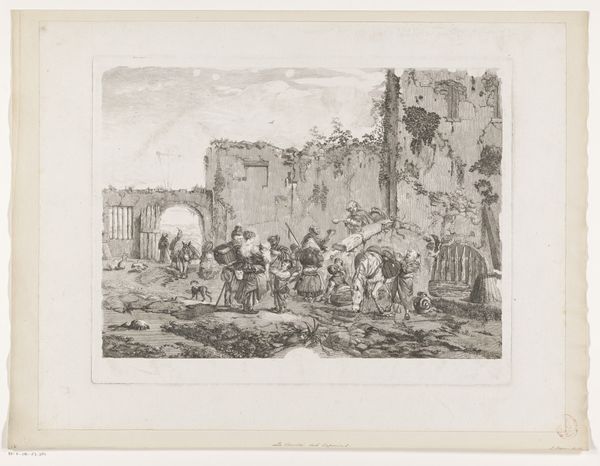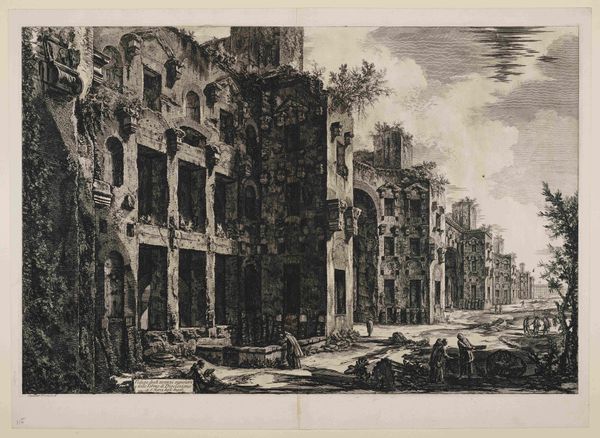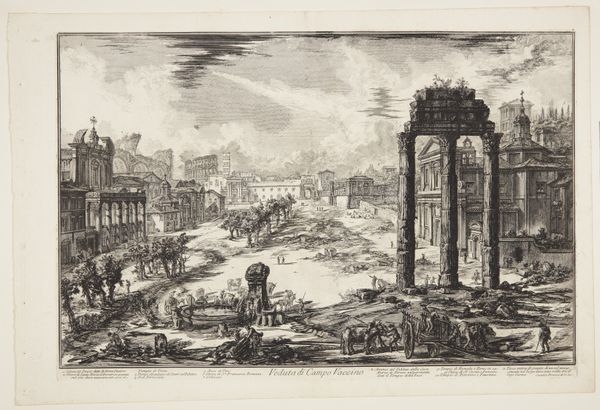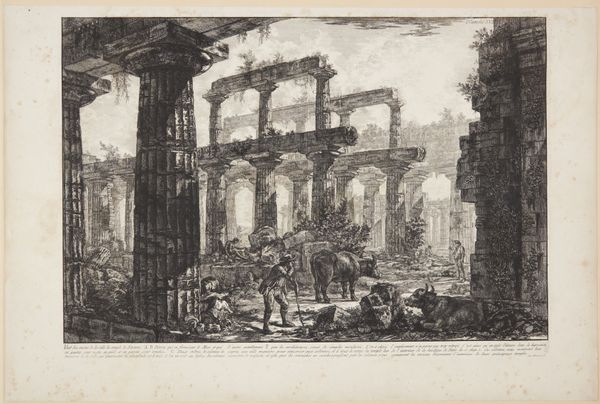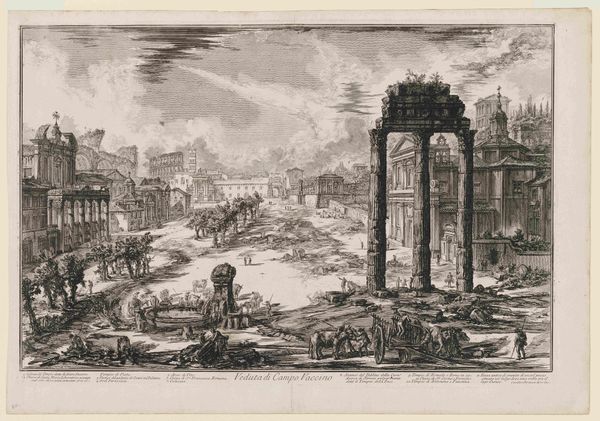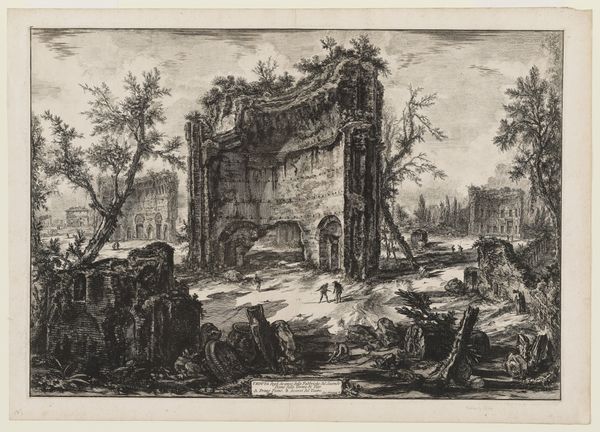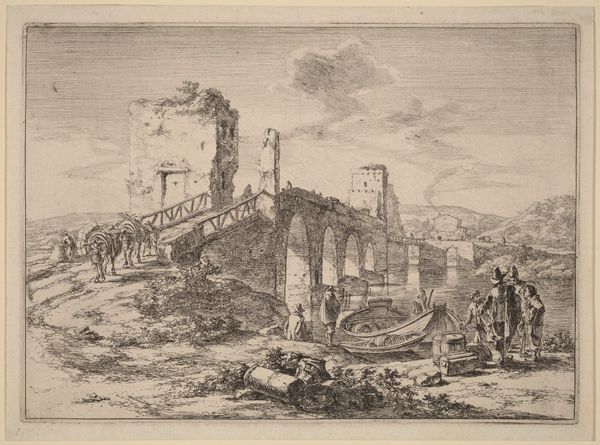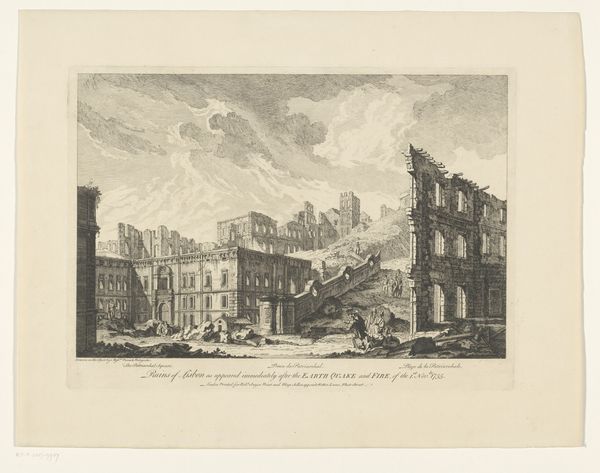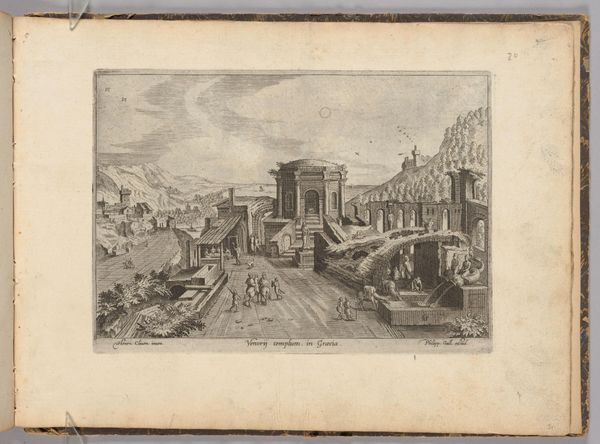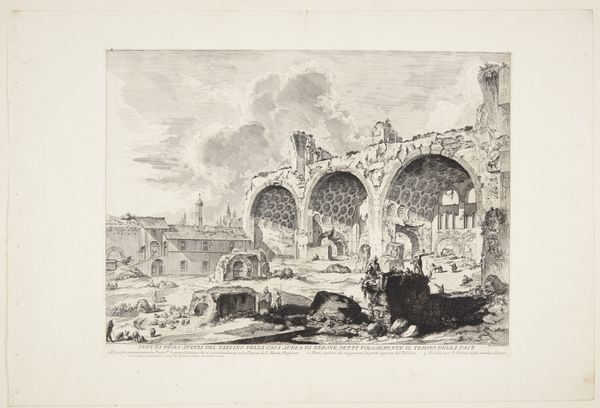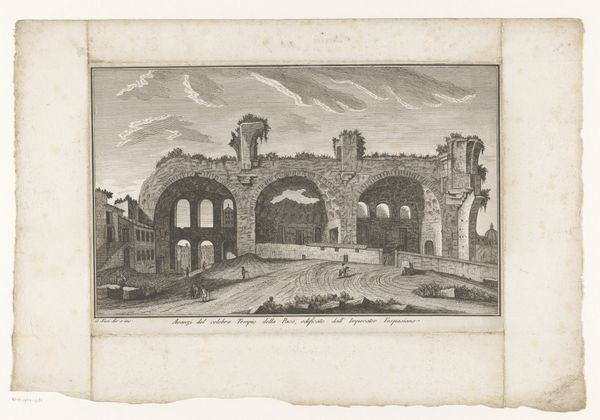
View of the Arch of Constantine and the Flavian Amphitheatre, called the Colosseum 1760
0:00
0:00
print, engraving
#
baroque
# print
#
landscape
#
cityscape
#
history-painting
#
engraving
Dimensions: 408 mm (height) x 547 mm (width) (plademaal)
Giovanni Battista Piranesi etched this view of the Arch of Constantine and the Colosseum, immortalizing Rome's ancient grandeur. Here, the arch stands as a potent symbol of triumph, its form echoing the Roman ideals of power. Yet, the Colosseum, once a site of spectacle and death, is now a ruin. We see how these structures invite reflections on the cyclical nature of empires. Consider the triumphal arch—a motif traceable through time. From Rome, it reappears in Renaissance cityscapes, Napoleon's Parisian aspirations, and even modern commemorative structures. Each iteration carries echoes of its predecessors, yet embodies new ideals. The arch, initially celebrating military victory, evolves into a symbol of national identity, or even collective memory. Piranesi’s etching captures not merely stone and architecture, but an enduring, subconscious dialogue with the past. These forms resonate deeply within us, evoking awe and contemplation. The ruin is, thus, an embodiment of cultural memory.
Comments
No comments
Be the first to comment and join the conversation on the ultimate creative platform.

